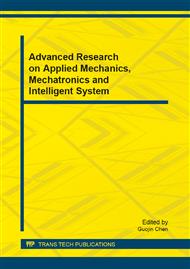[1]
Yang Zhenjie, Li Jiafen, Su Changming et al. Advances in side wall strengthening technology. Fault-Block Oil & Gas Field, 2008, 15(3): 99-102.
Google Scholar
[2]
Al-Ajmi A M, Sultan Qaboos U, Zimmerman R W. Stability analysis of deviated boreholes using the Mogi-Coulomb failure criterion, with applications to some oil and gas reservoirs. SPE 104035, (2006).
DOI: 10.2118/104035-ms
Google Scholar
[3]
Zhu Rongdong, Chen Ping, Xia Hongquan et al. Study on stability of fractured borehole wall . Fault-Block Oil & Gas Field, 2007, 14(5): 56-58.
Google Scholar
[4]
Jincai Zhang, Borehole stability analysis accounting for anisotropies in drilling to weak bedding planes, International Journal of Rock Mechanics & Mining Sciences, 60 (2013)160–170.
DOI: 10.1016/j.ijrmms.2012.12.025
Google Scholar
[5]
Daniel Moos, Pavel Peska, Thomas Finkbeiner et al, Comprehensive wellbore stability analysis utilizing Quantitative Risk Assessment, Journal of Petroleum Science and Engineering 38 (2003) 97– 109.
DOI: 10.1016/s0920-4105(03)00024-x
Google Scholar
[6]
Feng Yongcun, Deng Jingen, Li Xiaorong, et al. Analysis of failure criterions on wellbore stability prediction. Fault-Block Oil & Gas Field, 2012, 19(2): 244-248.
Google Scholar
[7]
Deng Jingen, Zhang Hongsheng, The mechanics mechanism of borehole instability in drilling engineering, 1998. 10, Petroleum Industry Press, 14-29.
Google Scholar
[8]
CHEN Ming, SU Yuan-da, SUN Jian-meng et al, Calculated parameters of rock and evaluated well stabil ity, using multi- pole array acoustic logging, Inner Mongolia Petrochemical Industry, 2008(9): 236-237.
Google Scholar
[9]
Li Chuangliang, Kong Qiangyan, A Theoretical Study on rock breakdown pressure calculation equations of fracturing process, Oil Drilling & Production Technology, 2000, 22(2): 54-56.
Google Scholar
[10]
Huang Rongzun, Zhuang jinjiang, A new formation fracture pressure prediction method, Oil Drilling & Production Technology, 1986(3): 54-56.
Google Scholar
[11]
Lou Yishan, Zhang Xueliang, Wang Yuying et al, Application of Formation Caving Pressure Prediction Technology, PETROLEUM DRILING TECHNIQUES, 1999, 17( 3) : 12-13.
Google Scholar
[12]
Liu Zhidi, Xia Hongquan, Zhang Yuanze, Zhang Yuanze et al, NATURAL GAS INDUSTRY, 2004, 24( 1) : 57-59.
Google Scholar
[13]
Zhang Chuanjin, ANALYSIS ON COLLAPSE PRESSURE IN BLOCK I OF JUNGGAR BASIN, Chinese Journal of Rock Mechanics and Engineering, 2004, 23(14): 2417~2420.
Google Scholar
[14]
Jincai Zhang, James Lang, William Standifird, Stress, porosity, and failure- dependent compressional and shear velocity ratio and its application to wellbore stability, Journal of Petroleum Science and Engineering 69 (2009) 193–202.
DOI: 10.1016/j.petrol.2009.08.012
Google Scholar


